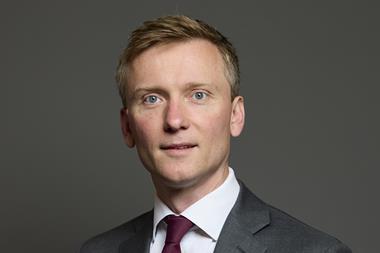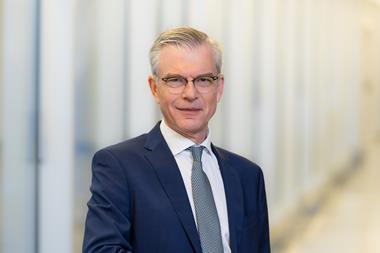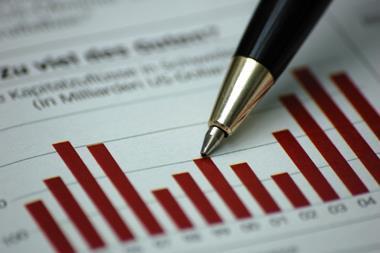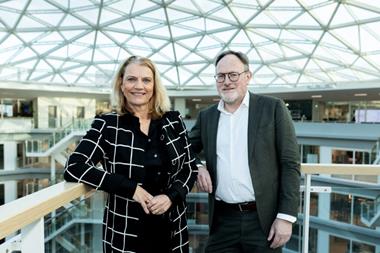There’s an old Chinese curse that says ‘may you live in interesting times’. It might have been coined for the Dutch pensions industry.
“All times are interesting, especially for Dutch pension funds,” says Jeroen Steenvoorden, director of pension fund for self-employed medical specialists SPMS. “There is so much going on.”
“Dutch pension funds have been through a very turbulent period,” says Frans Prins, director of the Corporate Pension Funds Association (OPF). “Now the focus is on the implementation of new policy initiatives and legislation. The main issues are a move from final-pay arrangements to average-pay schemes, the implementation of actuarially fair early retirement schemes, the introduction of the fair value measurement of pension liabilities instead of a fixed discount rate of 4%, and in some cases a change from a defined benefits scheme to a so-called collective defined contribution scheme.”
Earlier this year it was expected that a new pensions law, pulling together various amendments to previous legislation dating back to 1952 and containing a new financial assessment framework (FTK), would be implemented from the beginning of next year. But the government that bulldozed the changes through the initial consultation stages with the industry and into the lower house of parliament collapsed in June and a minority caretaker administration called an early general election for November.
And this has made the timetable uncertain. “The lower house is due to pass the law this month,” says Prins. “But the question is whether the Senate will be able to reach a decision before the election. It’s up to the Senate to decide whether it thinks the law is important enough to consider before election day.”
However, whether the pensions law is passed before the end of the year or not the expectation is that the FTK will go into effect on 1 January 2007. “Everybody thinks that the FTK will be implemented, through a decree if not through legislation,” says Renske Biezeveld, policy adviser at the association of industry-wide pension funds (VB).
“The FTK is going to come anyway because the regulator, the DNB, is strongly in favour of the measure and is a very powerful actor in this area,” says Erik Hulshof, director of finance and information at Mn Services. “It’s going to happen, although there might be a slight delay.”
“In light of the imminence of the introduction of the FTK one would have expected that pension funds would have moved towards fixed interest last year,” says Biezeveld. “But instead one saw a rise in equities of approximately 1%. This might be attributed to the rise in value of equities, but for some pension funds it might have been an active choice based on ALM studies. In addition, because of last year’s low interest rates, pension funds had been delaying the switch towards more matching of assets and liabilities.”
One fund that chose not to move in that direction was ABP. “A number of other pension funds have an interest rate hedging strategy in order to fully or partially match their liabilities, and given rising interest rates that hurt in the first half of 2006 that is hurting them,” says Roderick Munsters, ABP CIO and chairman of ABP Investments. “We don’t, so at the moment we have a slightly better performance. We are in the business of providing pensions. Pensions are about adjusting the contributions to inflation. If we were to hedge a normal interest rate risk we would be vulnerable to both interest rate rises and to unexpected inflation, which now happens to be at a very low point. So that’s why within our risk limits we decided not to hedge this interest rate risk.”
PME, the industry-wide Metalektro fund, was one of those that made the opposite choice. “Our strategies are already compliant with the FTK,” says fund manager Paul van Gent. “So we don’t need to make any additional changes to conform.
“We have tried to reduce our reliance on the equity component and we try to achieve our return with less risk, so we have a relatively low equity weighting, of around 30%, and we traditionally have more in fixed income. We are always asking ourselves: are we doing the right thing and are we doing it right?
“Our benchmark had a return of 18.2% so the first conclusion is that whatever we are doing we did it right. And if we compare it with the WM universe, which was 14.5%, I would say we were also doing the right thing. Although, if you look at that in a bit more nuance, the previous year we had introduced some interest rate coverage, and that contributed 4.2% to that result. So if you were to strip that out we would have had a 14% result, which is slightly lower than the WM result. So a major contributor last year relative to everyone else’s result was that we had interest rate coverage.
“In equities we managed to outperform, with a return of 34%. In fixed income we managed to outperform, with 12.7%, in real estate we underperformed but we outperformed with our commodity investments which, with around 6%, gave a return of over 45%.”
And Steenvoorden’s SPMS is also preparing to be FTK-compliant. “We are currently doing an ALM study in the expectation that the FTK will come into effect 1 January and that then we will have another structure for the measurement of liabilities,” he says. “But ahead of its implementation we are already managing more at market value.”
SPMS posted a 2005 return of 11.8%. “We have taken a strategic decision to have a hedge, but unhedged the result was 16.2%. According to the benchmark, equities and real estate outperformed. The absolute return of the shares portfolio was 28% and for real estate it was 16%. For bonds it was +8% but the market did a little better because our duration was relatively short. In total we outperformed our own internal benchmark by 66 bps.
“In 2005 we had 46% of the portfolio in bonds, 6% in credit, 41% in equities and 6% in real estate. And the real estate part will increase to 10% during this year. We have already given commitments to non-listed real estate third parties that we will invest in them.”
“The highest returning assets were the real assets - equities, private equity and real estate - and by tradition ABP has a pretty high percentage in fixed income,” says Munsters. “In 2005 real assets earned almost 21% and fixed income a bit more than 4%. So our asset mix meant that we had a year in which we fell a bit behind the other pension funds that have a bigger allocation to equities, private equity and real estate.”
And ABP has a long track record in private equity. “We began building our private equity capabilities with the takeover with PGGM of NIB Capital in 1999,” says Munsters. “We split off its private equity arm, merged it with our own private equity operation and as AlpInvest Partners it manages the private equity interests of both ABP and PGGM. And yes, we are raising our private equity allocation. At the moment it is around €4.6bn, some 2.6% of the portfolio. We’d like to see it go to 4%, as foreseen in our current investment plan. But it is not a linear process, it’s a bit lumpy, attractive private equity is not available from the tap” “Our best performing asset class in 2005 was private equity,” says Leo Lueb, chief investment officer at PGGM. “The second best performing asset class was commodities, and equities came third.”
PGGM’s asset allocation target was 30% fixed income, 45% equities, 5% commodities, 12% real estate, 5% in private equity and roughly 3% in portfolio strategies.
“The period of low volatility in the financial markets is ending and we will have to deal with continued higher volatility,” Lueb says. “And that means diversification in the portfolio is ever more important. PGGM’s diversification efforts are very much focused on finding new asset classes, new risks that can help us further diversify the portfolio. So if that is considered an alternative asset class, then we are continuing to search for new alternative asset classes.”
“The name of the game for the future will be diversification and private illiquid markets,” says Munsters. “One of the things we will do in order to get there is to open a Hong Kong office in either the fourth quarter or during next year. It is a sign of how we want to further diversify. Hong Kong is not about trading liquid markets but having a local presence in the Asian growth markets where we want to look for illiquid investments.”
Steenvoorden is also looking at diversification. “The question is should we or should we not add new asset classes, and how do these classes fit into an FTK environment,” he says. “And we also have to take the interest rate into account because until now we have taken full exposure of interest rate increases or decreases, and for the last half year this worked out extremely well. Our funding level on a nominal basis was 199% at the end of last year, but taking into account our indexation ambitions - we want to increase our pensions on a yearly basis - our funding ratio 122% and that is quite a huge difference. But the indexation is conditional so we can take some risk in comparison with some of the other pension funds.”
“For us the first six months of this year were worse than for many of our competitors,” says Van Gent. “That was largely due to the rise in interest rates, so what gave us some extra return in 2005 hurt us later. However, foreseeing the problem we managed to limit the damage by increasing our exposure to commodities to 8% from 6% and have continued to focus on improving our alpha strategies.
“And looking at it from a liability side we have improved our coverage ratio, although not as much as some of the other pension funds because our liability coverage meant we profited less from the rise in interest rates. So we now have a strange world where even though returns are bad it’s starting to look up for our stakeholders because the coverage ratio is increasing. So, from that point of view these are not particularly sombre times because we are at least becoming more solvent.”
Steenvoorden agrees. “Our investment result showed a small plus in the first half of this year; the first quarter was good and the second quarter was less good. But the increase in interest rate is an advantage because it decreases the value of our liabilities. So from the point of view of the funding ratio the first half increased at market value by more than 10%. In that sense the fund is more healthy now than it was at the end of last year and the impact of the first half wasn’t as bad as it would appear from investment returns.”
Looking ahead there is still considerable uncertainty, says Hulshof. “There is still a question mark about interest rates and there is insecurity in the market because of the Middle East situation, both because of the recent hostilities and because of oil prices.”
But Steenvoorden is more upbeat: “We are not negative about the long-term prospects of equity, and we feel that in the long-term by taking risks and looking for alpha we improve the pension fund,” he says. “And you have to think very carefully about the interest rate risk. But you should certainly not set asset allocation on automatic pilot and try to match your portfolio because there are two sides to risk, an upper potential and a downward potential. So while you need enough financial strength, or buffers, to take the risks you should always be monitoring whether you still want to take it and to what extent do I want to take it.”












No comments yet